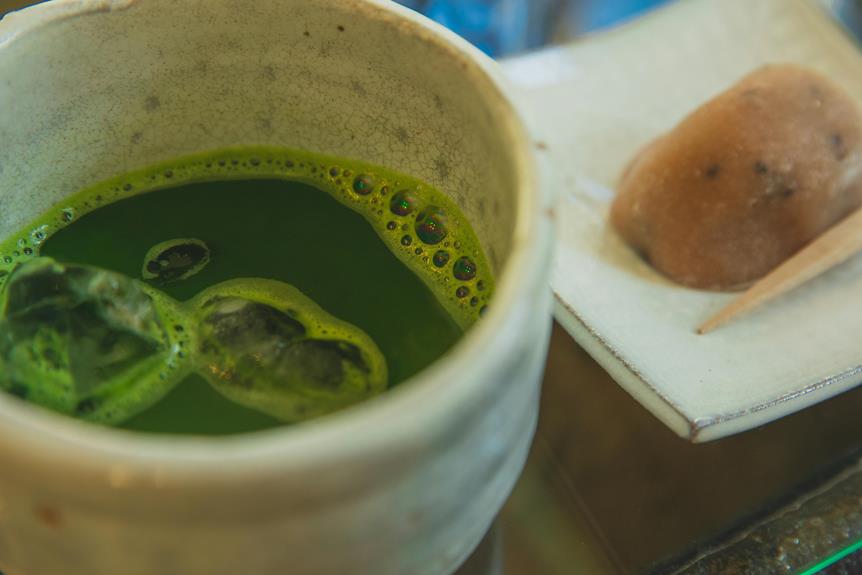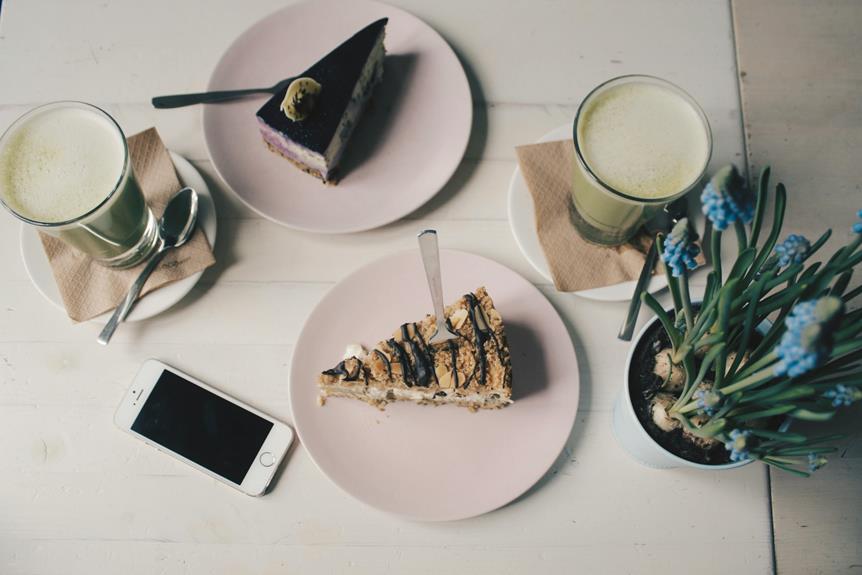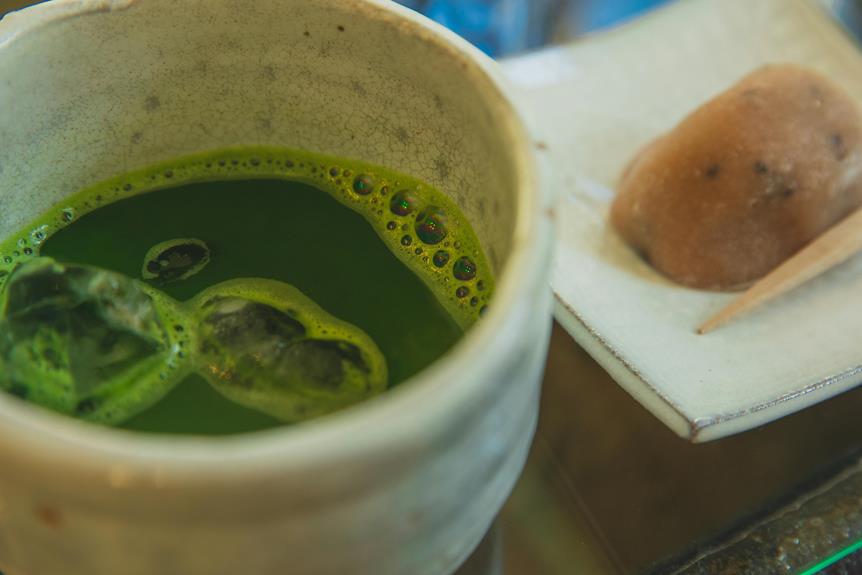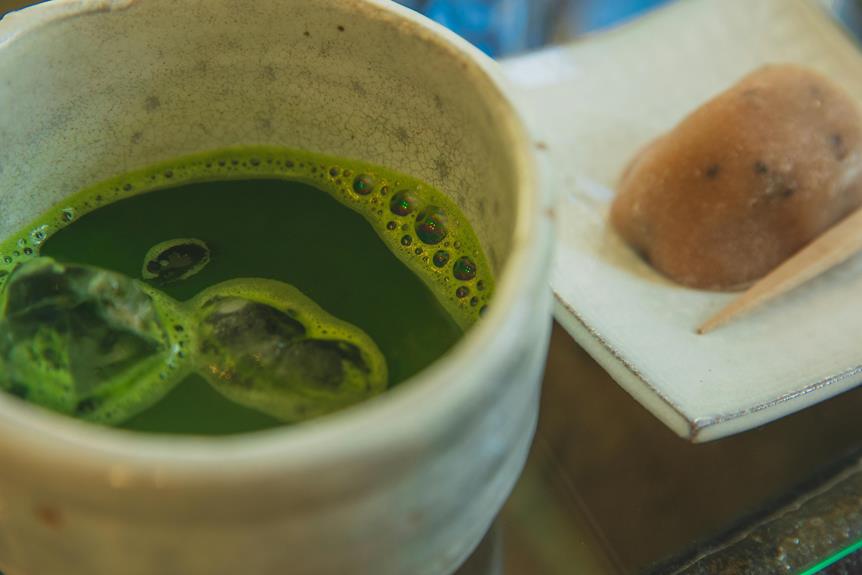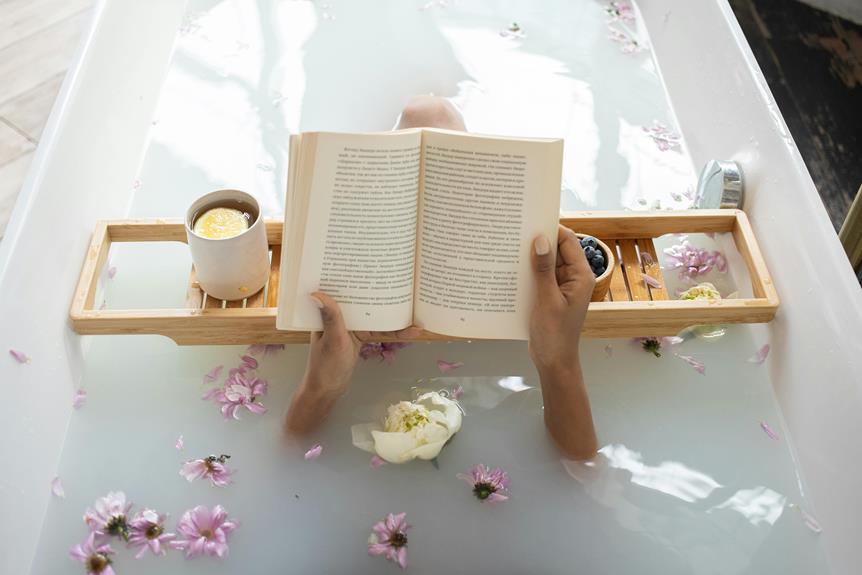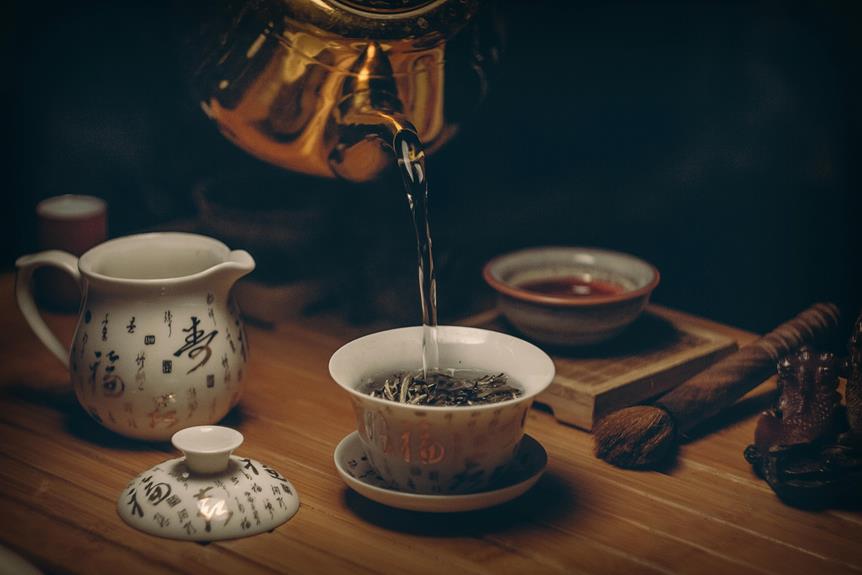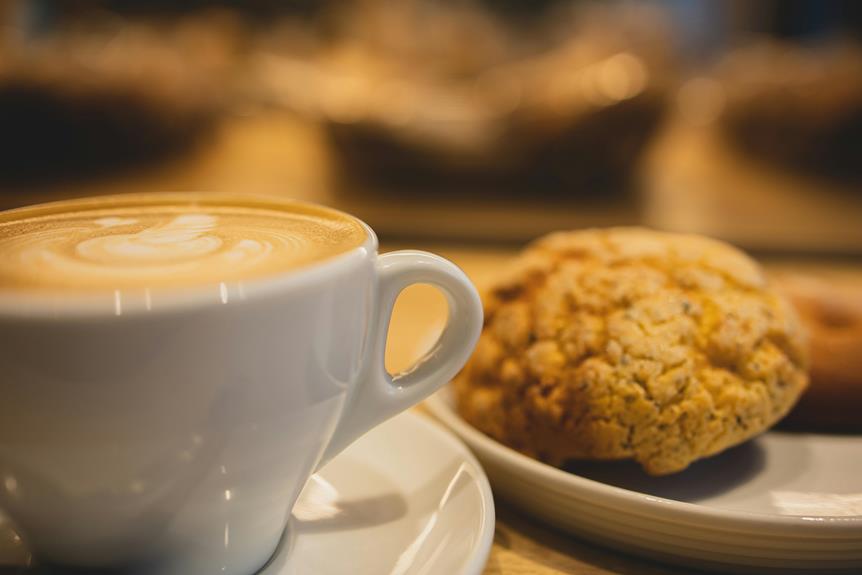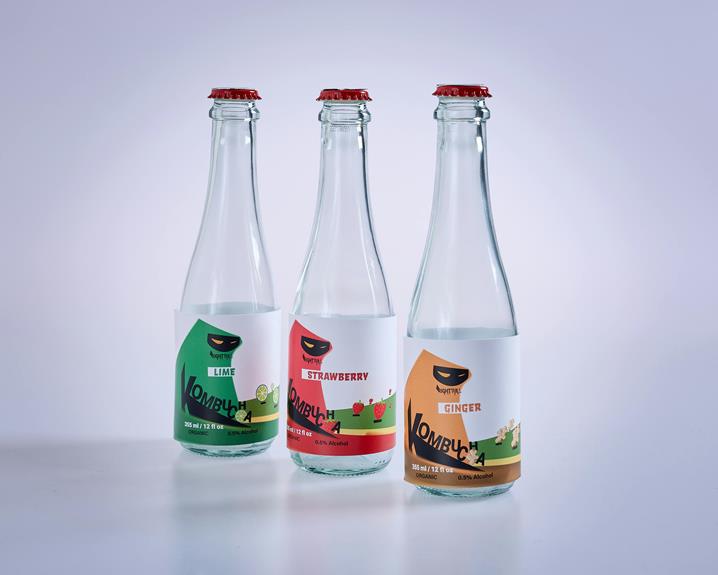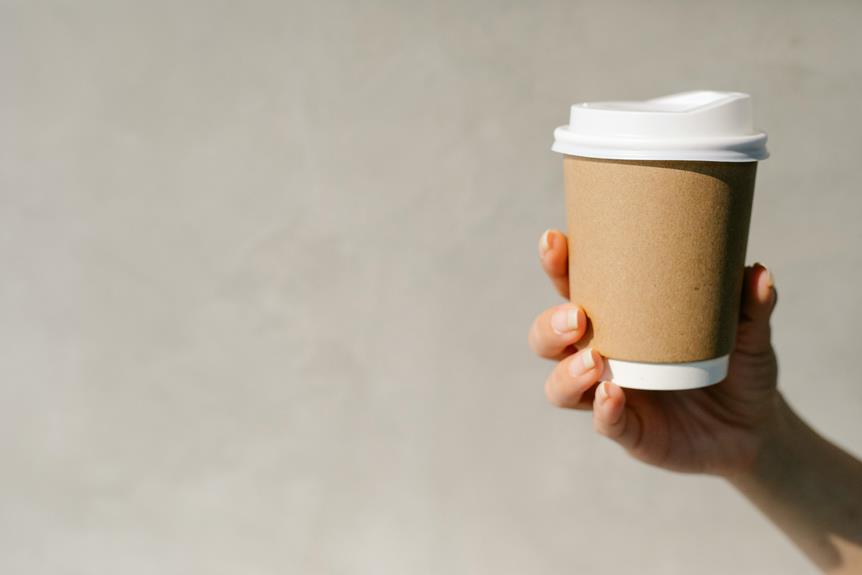You've likely sipped on Indian chai without realizing that the aromatic blend you're enjoying is a carefully crafted fusion of ancient traditions, colonial influences, and local flavors. From the British East India Company's introduction of tea to India in the early 20th century, Indian chai has evolved into a unique blend of spices, milk, and sugar. Each region has its own Chai Trails, shaped by local ingredients and climate. With a deliberate approach to preparation methods and a thoughtful selection of spices and ingredients, you can experience the art of Indian chai in its true form. And that's just the beginning of the story.
Key Takeaways
- Indian chai is a unique blend of tea, spices, milk, and sugar, influenced by colonial and ancient traditions.
- Regional variations of chai exist, with distinct flavor profiles shaped by local ingredients, climate, and cultural heritage.
- Master blenders craft unique chai blends by balancing strengths and weaknesses of individual spices, herbs, and teas.
- The art of chai blending involves identifying specific flavor characteristics to achieve a harmonious flavor profile.
- Modern twists on traditional Indian chai include innovative flavors, ingredients, and brewing methods, such as cold brew and nitro chai.
The Origins of Indian Chai
You can trace the origins of Indian chai back to the early 20th century, when the British East India Company brought tea to the Indian subcontinent.
The colonial influence had a profound impact on India's culinary culture, introducing new ingredients and brewing techniques that eventually blended with ancient traditions.
As tea became more accessible, it merged with the rich flavors of spices, milk, and sugar, giving birth to the unique flavor profile of Indian chai.
The ancient trade routes that connected India to the rest of Asia and Europe played a significant role in shaping the country's tea culture.
Merchants and travelers brought exotic spices, herbs, and teas from distant lands, which were then incorporated into local recipes.
The resulting blend of flavors was a true reflection of India's cultural diversity.
As you explore the world of Indian chai, you'll discover the fascinating story of how colonial influence and ancient trade came together to create a beverage that's both distinctly Indian and universally loved.
Regional Variations of Chai
As you venture beyond the origins of Indian chai, the diverse regional flavors and brewing techniques that have evolved over time become apparent, reflecting the country's rich cultural tapestry.
You'll discover that each region has its unique Chai Trails, shaped by local ingredients, climate, and traditions.
In the north, you'll find strong, sweet chai infused with cardamom and ginger, while in the south, tea is brewed with coconut milk and spices like cinnamon and cloves.
In the east, the Bengalis take pride in their strong, bitter chai, often served with mishri, a type of rock sugar.
In contrast, the Gujaratis in the west prefer a sweeter, creamier brew.
These regional variations are an expression of India's rich cultural diversity, with each region proudly showcasing its distinct Regional Identity through its chai.
As you explore these Chai Trails, you'll uncover the nuances that make each region's tea truly special.
Whether you're in a bustling street market or a cozy roadside stall, the flavors and aromas of Indian chai will leave you enchanted and keen to explore more.
The Art of Chai Blending
Master blenders carefully select and combine a range of spices, herbs, and teas to craft unique chai blends that tantalize the senses.
As you explore the world of chai blending, you'll discover that it's an art that requires precision and patience.
Chai profiling is a vital step in this process, where blenders identify the specific flavor characteristics they want to achieve in their blend.
This involves balancing the strengths and weaknesses of individual ingredients to create a harmonious flavor profile.
You'll need to ponder factors like the type of tea leaves, the ratio of spices to tea, and the sweetness level to achieve the perfect balance.
Flavor balancing is key to crafting a great chai blend.
You'll need to adjust the levels of sweetness, spiciness, and bitterness to create a flavor experience that's both complex and revitalizing.
By mastering the art of chai blending, you'll be able to create unique and delicious blends that will leave a lasting impression on those who taste them.
With practice and patience, you can discover the secrets of this ancient art and become a master chai blender.
Spices and Ingredients Used
The aromatic flavors of Indian chai are mainly derived from a thoughtful selection of spices and ingredients, which can include cinnamon, cardamom, ginger, cloves, and black tea leaves, among others.
As you explore the world of Indian chai, you'll discover that the choice of spices and ingredients is vital in creating unique flavor profiles.
From the sweet and spicy notes of cinnamon and cardamom to the warm, comforting essence of ginger, each spice adds depth and complexity to the brew.
For those looking to elevate their chai game, gourmet options abound.
You can experiment with exotic spices like star anise, nutmeg, or rose petals to create distinctive flavor profiles.
Some blends may incorporate Assam or Darjeeling tea leaves for a richer, more nuanced taste.
Others might include a hint of vanilla or caramel for added sweetness.
Whatever your taste preferences, the possibilities are endless, and the art of combining spices and ingredients is where the magic happens.
Chai Preparation Methods
Brewing the perfect cup of Indian chai involves more than just tossing spices and tea leaves together, it requires a deliberate approach to preparation methods that coax out the ideal flavors.
When it comes to chai brewing, you'll want to start by selecting the right tea leaves. Assam or Darjeeling tea is usually preferred, as they provide a strong, rich flavor.
Next, you'll need to decide on the chai brewing method. Some people swear by the traditional stovetop method, where the tea leaves and spices are simmered together in milk and water. Others prefer the convenience of a chai tea infuser or a French press.
Regardless of the method, the key is to allow the tea to steep for the right amount of time. This will guarantee that the flavors are fully extracted and the tea reaches the perfect strength.
When it comes to tea steeping, aim for around 3-5 minutes, depending on your personal preference.
The Cultural Significance of Chai
Every day, millions of Indians start their morning with a steaming cup of chai, a ritual that's deeply ingrained in the country's cultural fabric.
As you immerse yourself in this daily tradition, you'll discover that chai is more than just a beverage – it's a symbol of hospitality, unity, and comfort.
In India, chai is often served during social gatherings, fostering a sense of community and social bonding. Whether it's a family reunion, a friend's visit, or a casual street-side chat, chai is always at the center, bringing people together.
Beyond its social significance, chai also offers spiritual solace to many Indians.
In Hinduism, tea leaves are believed to possess sacred properties, and the act of sipping chai is thought to cleanse the mind and body.
For some, the ritual of preparing and sipping chai is a meditative experience, providing a moment of tranquility in an otherwise chaotic world.
As you explore the cultural significance of chai, you'll find that it's not just a drink, but a way of life that embodies warmth, generosity, and togetherness.
Chai in Indian Daily Life
As you walk through the bustling streets of India, chai stalls and vendors are omnipresent, beckoning you to pause and refuel with a steaming cup of this beloved beverage.
Chai is an integral part of daily life in India, and its significance goes beyond just a hot cup of tea. It's a ritual that brings people together, fosters social connections, and provides a much-needed break from the chaos of daily life.
It's a morning ritual: Many Indians start their day with a cup of chai, often accompanied by breakfast or snacks.
It's a social glue: Chai is often shared with friends, family, and colleagues, fostering a sense of community and connection.
It's a comfort drink: A warm cup of chai is often the go-to comfort drink during rainy days, cold winters, or when you're feeling under the weather.
It's a energizer: A cup of chai is often the perfect pick-me-up during a long day of work or study.
It's a symbol of hospitality: Offering a cup of chai to guests is a sign of respect and welcome in Indian culture.
Modern Twists on Traditional Chai
Modern chai vendors and entrepreneurs are now experimenting with innovative flavors, ingredients, and brewing methods to reinvent the traditional cup of chai, enthralling a new generation of tea enthusiasts.
As you explore the modern chai scene, you'll discover unique fusion blends that combine traditional Indian spices with international flavors. Imagine sipping on a chai infused with Japanese matcha or Moroccan mint!
You might even stumble upon chai-based cocktails, expertly crafted to tantalize your taste buds. Try a Chai Old Fashioned or a Masala Chai Martini – the perfect blend of spice and sophistication.
These modern twists aren't just limited to flavors; brewing methods are also getting a makeover. You might find vendors using cold-brew or nitro-infusion techniques to create a smoother, more revitalizing cup of chai.
As you navigate this exciting landscape, you'll realize that the art of Indian chai is evolving, and it's an exhilarating time to be a part of it. Whether you're a traditionalist or an adventurer, there's a modern chai out there waiting to delight your senses.
Frequently Asked Questions
How Do I Store Indian Spices to Preserve Their Flavor and Aroma?
You keep your Indian spices fresh by storing them in a cool, dark place, using Spice Racks or Airtight Containers to protect them from light, heat, and moisture, preserving their flavor and aroma.
Can I Use Tea Bags to Make Authentic Indian Chai at Home?
"When in Rome, do as the Romans do" – ditch tea bags for an authentic Indian chai experience! You'll compromise on tea quality and flavor. Opt for loose-leaf tea or bag alternatives like infusers or strainers for a richer brew.
Are There Any Health Benefits to Drinking Indian Chai Regularly?
You'll be happy to know that drinking Indian chai regularly can bring you several health benefits! The black tea in chai packs antioxidant properties, which can help reduce cell damage, and may even provide cardiovascular benefits, improving heart health over time.
Can I Make Indian Chai With Green Tea Instead of Black Tea?
You can definitely experiment with green tea for a lighter, more delicate flavor profile, but keep in mind it'll alter the traditional Indian chai taste; the subtle bitterness of green tea will create a unique twist on the classic brew.
How Do I Froth Milk for a Creamy and Velvety Chai Texture?
"Oh, you want to froth milk like a pro? Please, it's not rocket science… or is it? Heat milk to 140°F-160°F, then try the whirlpool or steam wand frothing techniques to achieve that velvety texture you're craving!"
Conclusion
As you savor the final sip of your Indian chai, the aromatic spices linger on your palate, transporting you to the vibrant streets of India.
You've traversed the rich history, explored regional flavors, and mastered the art of blending.
With every cup, you've experienced the warmth of Indian hospitality, the comfort of daily routines, and the thrill of modern twists.
Now, as the flavors meld together, you're left with a sense of connection – to the land, the people, and the timeless tradition of Indian chai.
